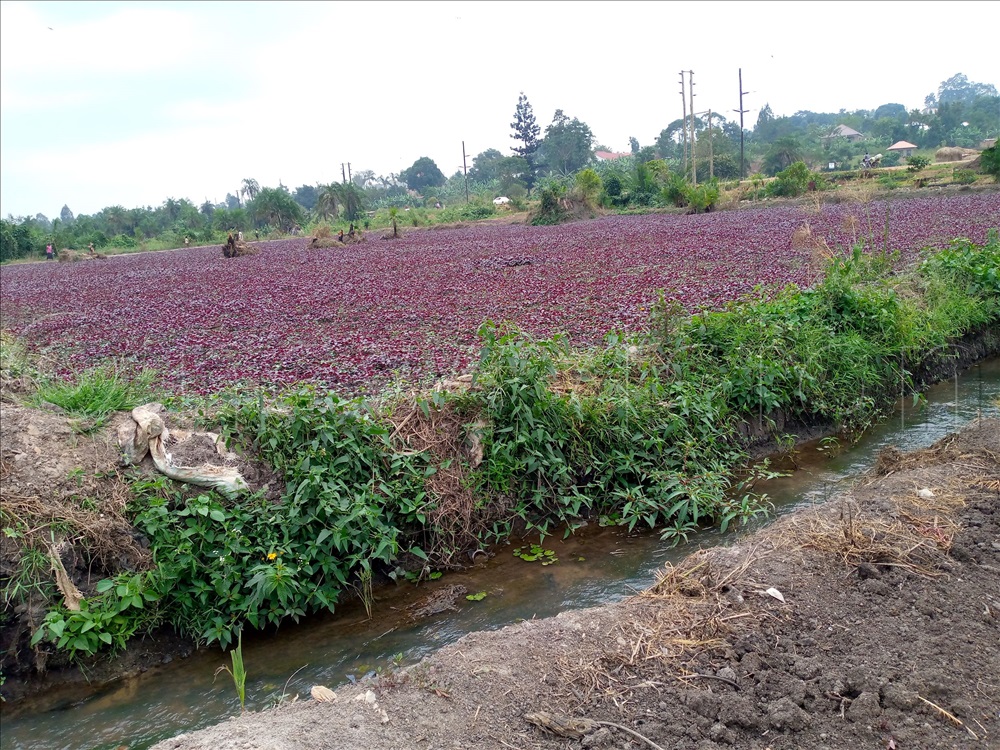By Umar Nsubuga
Vegetables grown in Uganda’s wetlands have become an integral part of local markets, yet their safety and sustainability remain subjects of growing concern.
The fertile, moist conditions of wetlands provide a natural appeal for cultivation, especially for small-scale farmers looking to make a livelihood.
However, agronomists like Gideon Zakke and Henry Sekyewa, along with vegetable growers such as Harriet Nalubwama, warn that without careful practices, wetland farming can pose risks both to the environment and consumer health.
For Nalubwama, who has been growing vegetables in wetlands for over three years, the benefits are hard to ignore.
“In the wetlands, water is always available, and the soil is rich and fertile,” she explains.
“This means we can grow crops all year round, even when other areas suffer from drought. For me and many farmers like me, wetland farming has been a lifeline.”
She notes that with consistent water and nutrient-rich soil, her yields have doubled compared to traditional upland farming.

Despite these benefits, experts like Zakke highlight serious environmental concerns.
Zakke, an agronomist with years of experience, explains, “Wetlands are delicate ecosystems, and farming disrupts their natural balance. Wetland vegetation plays a crucial role in water filtration, flood control, and carbon storage. When we clear these plants for agriculture, we not only destroy habitats but also increase the risk of floods, soil erosion, and water contamination.”
Adding to this, agronomist Sekyewa cautions about the health risks linked to wetland farming practices, especially in areas near urban or industrial zones.
“Some wetlands are exposed to pollutants, such as heavy metals from industrial runoff,” he explains.
“When vegetables grow in contaminated soils, these metals can be absorbed by the plants and end up on our plates, putting consumers at risk.”
Sekyewa stresses the importance of soil testing and water quality monitoring, but he acknowledges that few small-scale farmers have access to such resources.
Sharon Naluwende, a food safety expert, raises another concern: the potential for bacterial contamination in wetlands.
“Wetlands are naturally prone to bacteria like E. coli, which thrive in moist conditions,” she warns.
“Without proper handling, vegetables harvested from these areas can carry pathogens that are harmful if consumed, especially when eaten raw in salads.”
Naluwende advocates for thorough washing and even boiling vegetables grown in wetlands to reduce health risks, particularly for consumers in urban areas.
For Nalubwama, these insights underscore the need for balance. “I understand that wetland farming has its risks, but for many of us, it’s the only way we can make a living,” she says.
Her experience highlights the complexities faced by local farmers who are aware of the risks but are constrained by limited resources.
“Some of us have tried using organic methods to reduce pollution and avoid chemical fertilisers. We are doing our best with what we have, but there’s only so much we can do without support.”
The government has made attempts to regulate wetland use, encouraging farmers to shift to sustainable practices or even relocate to less vulnerable areas. However, many farmers are hesitant to give up their plots, particularly when alternative options are scarce.
According to Zakke, “If the government wants to make a real change, they need to provide resources and viable alternatives for these farmers. Training on sustainable practices and providing access to safer, non-wetland plots would go a long way.”
In the meantime, Sekyewa suggests small steps that farmers can take to reduce the environmental impact and ensure consumer safety.
“Implementing buffer zones around farming areas can help protect the core of wetlands. Farmers can also use organic fertilizers and pest control to minimize chemical runoff,” he advises.
For the consumer, Naluwende’s advice remains straightforward: “Support farmers who practice sustainable wetland farming and make sure to clean your vegetables thoroughly.”
With increased awareness and gradual improvements, the risks of wetland farming can be managed while still supporting local livelihoods.
The question remains: how can Uganda strike a balance between supporting its farmers and protecting its wetlands?
For growers like Nalubwama, the hope is that collaborative solutions will allow her and many others to continue their work without jeopardizing the environment or consumer health.
Until then, wetland-grown vegetables will remain a vital, if controversial, part of Uganda’s agricultural landscape.





